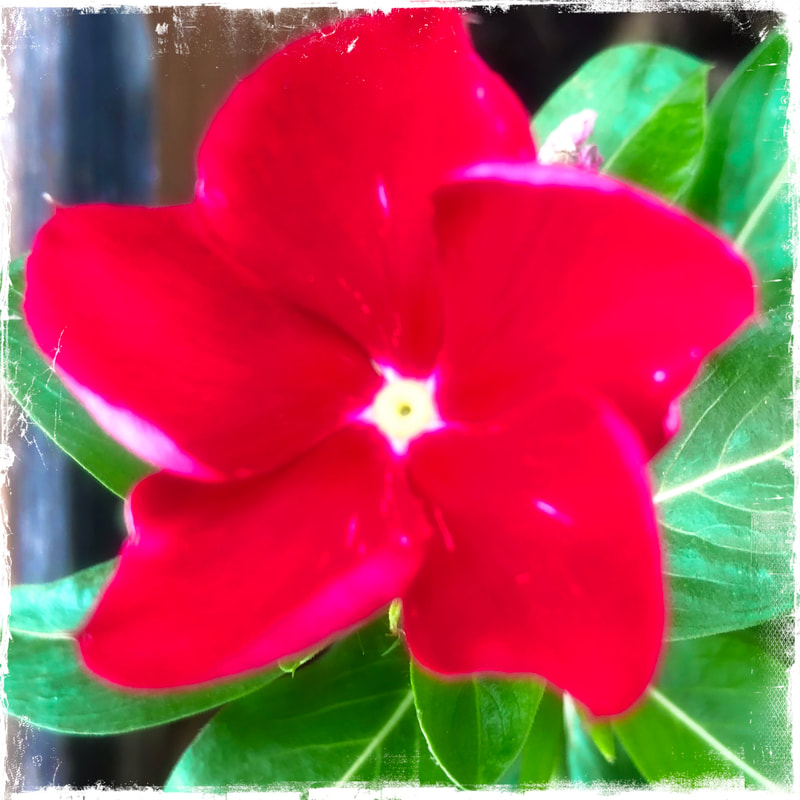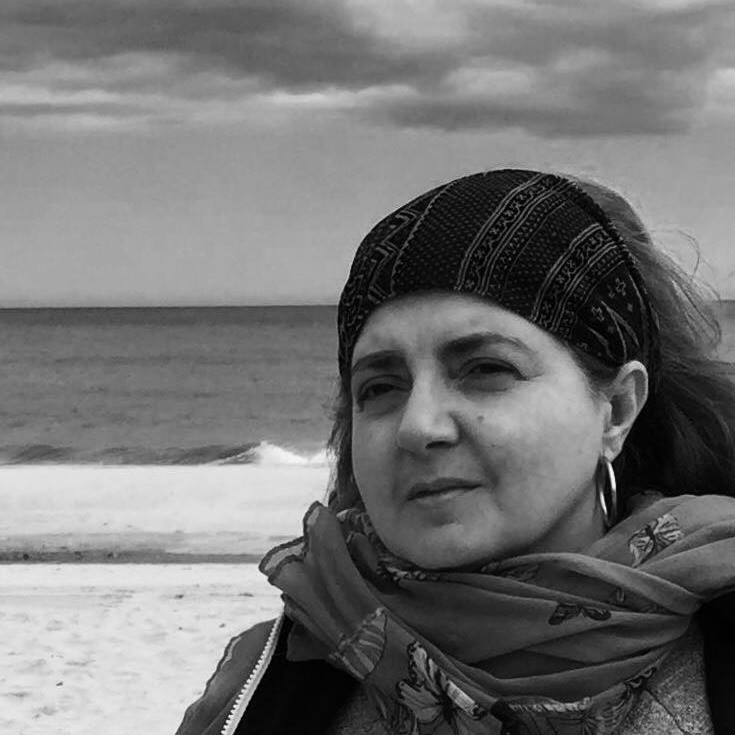ASSAY: A JOURNAL OF NONFICTION STUDIES
5.2
5.2
|
“... [T]o use the life that I have lived as an object of meditation, … to think about its relevance, but not its relevance to me necessarily because that would put me into a solipsistic moment and that is not what my work is about … thank goodness .... I am always interested in figuring out how the work will be relevant to other people.”
--Louise DeSalvo* On November 2, 2018, Nancy drives the six-and-a-half-hours from Morgantown, West Virginia to a Tudor home in Teaneck, New Jersey, a few miles from the George Washington Bridge that straddles life between New York and New Jersey. Teaneck is the town where Louise DeSalvo raised her two sons with her husband Ernie; it’s where she wrote most of her books, and where she became a cutting-edge memoirist. Edi moved from Jersey City to Teaneck in 1999; the fact that Louise lived there was a big part of the reason. It’s in Teaneck that Edi and Louise worked on their anthology, The Milk of Almonds: Italian American Women Writers on Food and Culture (The Feminist Press, 2002), at Louise’s large pine kitchen table in another Tudor home, their work not so much interrupted as framed by leisurely lunches, espresso, mid-afternoon snacks of Louise’s homemade biscotti.
Nancy’s trip to Edi’s home is a familiar one. She has made it many times before, especially between 2009 and 2014, the gestation period of Personal Effects: Essays on Memoir, Teaching, and Culture in the Work of Louise DeSalvo (Fordham University Press, 2015). Nancy drives from west to east, not east to west as she had when she lived in Rhode Island. What makes this trip different, however, is not only geographic direction. Instead of coming together to talk and write of Louise’s work, and editing the essays of the book’s eighteen contributors, we will be doing a different work. Our work will be, as Louise put it in Writing as Way of Healing, bundled up in the “complicated feelings” that emerge when facing a difficult situation or traumatic event (DeSalvo 17). Our friend Peter Covino arrives in Teaneck from Rhode Island. There are hugs and tears. Edi’s husband, Josh, is there too. The next morning we will drive from Teaneck to Montclair, where Louise and her husband had moved in 2003, not for a visit, not to meet Louise for lunch, but to gather with family, friends, and colleagues at the Unitarian Universalist Congregation to say goodbye begin to remember Louise. The four of us sit at the cherry dining room table. Our grief is as personal as the relationship we each had with Louise, but it’s also communal grief, unfolding at this table where Louise has sat many times, where we have celebrated together birthdays, book publications, visits of friends. We stand on the edge of our grief, reluctant to process the fact of Louise’s death. Peter blurts out that he didn’t think Louise would ever die. We get it, this absurd impulse to keep her loss at an impossible distance. What else can we do but turn to Louise, who has laid the groundwork for our grieving? In Writing as Way of Healing, she urges her readers to be wary of writing that is disconnected from “the narrative and emotional truth of [our] lives” (19). And now we must make what is “unbearable” bearable by processing and writing and connecting the emotions that stem from this loss. We must trust the very process vital to Louise’s work, which we described in Personal Effects not so long ago as “critically and ambivalently rooted in the stories of the communities the writer inhabits or has left behind” in order “to interrogate how relationships have formed, influenced, and changed” (Caronia and Giunta 1) not only us, but also our communities. Louise has been an integral figure in so many of our communities—how can we not be changed by this loss? With Personal Effects, we wanted to honor a living writer who deserved greater recognition and respect than we believed she had received. People had known her as a Woolf biographer, a scholar, a memoirist, a phenomenal teacher and mentor, and the author of two astounding books and a blog on craft and process. For us, these identities were inseparable from her self-appellation as a Southern Italian American woman writer. Southern Italian American identity was hard-won for Louise. She approached the study of this identity using the methods of the accomplished textual scholar she was, except this time she was uncovering the layers of her life and the lives of her people. All of Louise’s work was rooted in extensive cultural research, whether she was writing about teaching working class students, her own asthma, World War Two, or the oppression of peasants in Southern Italy. Louise legitimized a generation of writers by daring “to rewrite the history of her Italian American family, rejecting the trajectory of uncomplicated and successful assimilation” (Giunta). Her insistence on truth-telling was exemplary for those of us engaged in writing about identity through the lenses of gender, class, race, ethnicity, sexuality, and disability. And yet, very little has been written about Louise’s work beyond reviews of her books on Woolf or Vertigo. We wanted to make a book that would not simply cover the breadth of Louise’s work, but also resembled her work: it had to be personal and cultural, serious and visceral, scholarly and creative. Louise was a master of nonfiction: each of her books became a new experiment on, and illustration of, the possibilities of genre—she did not fit into one niche. Our book would honor that. We saw Personal Effects as the beginning of an ongoing and expanding examination of Louise’s multi-faceted and still-evolving career (at the time, she was working on The Art of Slow Writing: Reflections on Time, Craft, and Creativity, published in 2014; after that, she published two more books, Chasing Ghosts: A Memoir of a Father Gone to War and The House of Early Sorrows: A Memoir in Essays, in 2015 and 2018 respectively). Sometimes the phone would ring while we were busy editing an essay, writing the introduction, or doing any of the myriad editorial tasks that the project required. The robotic caller ID voice would announce “DeSalvo, Ernest” and, though we disregarded all other calls during our reclusive work days, we would pick up. After all, the subject of our book was on the line. We would talk with her, sometimes giddy with exhaustion, sometimes ready with questions, verifying a date, a place, a name, or asking broad questions about her work. Sometimes Louise would simply want to know what we were having for dinner—a welcome reminder that we needed sustenance of more than her words to support the work ahead. Sometimes we made plans to meet for lunch at one of her favorite restaurants. We knew it was a luxury to work on, and with, a writer like Louise, who always understood and respected the boundaries of our work. She made it clear that she was honored to witness the emergence of this body of work about her, never interested in even minimally influencing its shape, always respectfully and unassumingly watching from the sidelines, always ready with generous help if asked. The volume that emerged from our shared vision changed the way we viewed not only Louise and her work, but also our own work. Looking at Louise through the eyes of our contributors who examined her vast body of work (including her little-known novel Casting Off) afforded us a richer and fuller vision of this author we thought we knew so well. Louise inspired us to work together on a book about her, but she has also inspired us to understand and embrace the kind of work we need to do for ourselves and our communities. Today Edi is finishing her memoir while also collaborating with scholar activist Mary Anne Trasciatti on a collection of personal essays on the Triangle Shirtwaist Factory fire. Nancy is writing an essay that connects the recent West Virginia teachers’ strikes and Denise Giardina’s coal mining narrative Storming Heaven while she also continues to work on her own creative non-fiction. __________
November 15, 1996. Pittsburgh, PA. The American Italian Historical Association (now Italian American Studies Association) annual conference. Louise and Edi sit together in the front row as Nancy makes her first public appearance at an academic conference. She reads “Go to Hell,” a memoir about sexual and domestic violence that Edi and Louise will publish five years later in The Milk of Almonds. After the session, Louise comes up to Nancy and hugs her, whispering encouragement. Edi watches, smiling, as if recognizing the momentous nature of this meeting, a critical moment in the history of a collaborative, supportive, community-focused, feminist work that, in the years to come, will take many directions and forms involving many people and projects, including Personal Effects, a stitch in a long strand of life-sustaining encounters.
It is hard to write about Louise barely two months after her death. The task of writing about, explaining, what Louise meant to each of us, will take more time, a different rhythm. For now, writing this piece together helps us balance safely on the edge of our personal grief. As we write this essay, Edi has celebrated her daughter’s engagement. Nancy has sat with her mother whose memories are being eaten away by late stage Alzheimer’s. Here we try—once again—to write of Louise, the public and the personal interweaving, grief and celebration unwinding the many ways in which we have learned from her. The wound is fresh. We are already different. We sense change but cannot yet tell where it will take us. We know we will continue to change each time we think and write about Louise. She warned us in memoir after memoir, in Writing as a Way of Healing, and The Art of Slow Writing that we have no choice but change our perspective again and again. And so here we are, learning from Louise how to remember her. * From Louise’s remarks at the book presentation for Personal Effects: Essays on Memoir, Teaching, and Culture in the Work of Louise DeSalvo and Casting Off, CUNY John D.Calandra Italian American Institute, New York (December 1, 2014). Works Cited DeSalvo, Louise. Writing as a Way of Healing: How Telling Our Stories Transforms Our Lives. Beacon, 1999.
Caronia, Nancy and Edvige Giunta eds. Personal Effects: Essays on Memoir, Teaching, and Culture in the Work of Louise DeSalvo. Fordham University Press, 2015. Giunta, Edvige. “Memoir as Cross-Cultural Practice in Italian American Studies.” Assay: A Journal of Nonfiction Studies 5.1 (2018). https://www.assayjournal.com/edvige-giunta-memoir-as-cross-cultural-practice-in-italian-american-studies-51.html |
|
Nancy Caronia, PhD, is the co-editor of Personal Effects: Memoir, Teaching, and Culture in the Work of Louise DeSalvo (Fordham University Press, 2015). She wrote the introduction for the reprint of DeSalvo’s novel, Casting Off (Bordighera Press, 2014) and contributed “Resisting Displacement in Evaristo’s The Emperor’s Babe” to Aesthetics of Resistance: Madness in Black Women’s Fictions and the Practices of Diaspora (Palgrave MacMillan 2017). Her Pushcart Prize nominated creative non-fiction has appeared in Lowestoft Chronicle, Ovunque Siamo, New Delta Review, Animal: A Beast of a Literary Magazine, Tell Us a Story, BioStories, Italian Americana, among others. At West Virginia University, she is a Teaching Assistant Professor in the Department of English where she offers classes in literature and writing.
|
|
Edvige Giunta is the author of Writing with an Accent: Contemporary Italian American Women Writers.. She edited, with Louise DeSalvo, The Milk of Almonds: Italian American Women Writers on Food and Culture, and with Nancy Caronia, Personal Effects: Essays on Memoir, Teaching, and Culture in the Work of Louise DeSalvo. She wrote the introduction for the 2002 reprint of Vertigo by The Feminist Press. She is a Professor of English at New Jersey City University.
|
Continue Reading...
|
|


